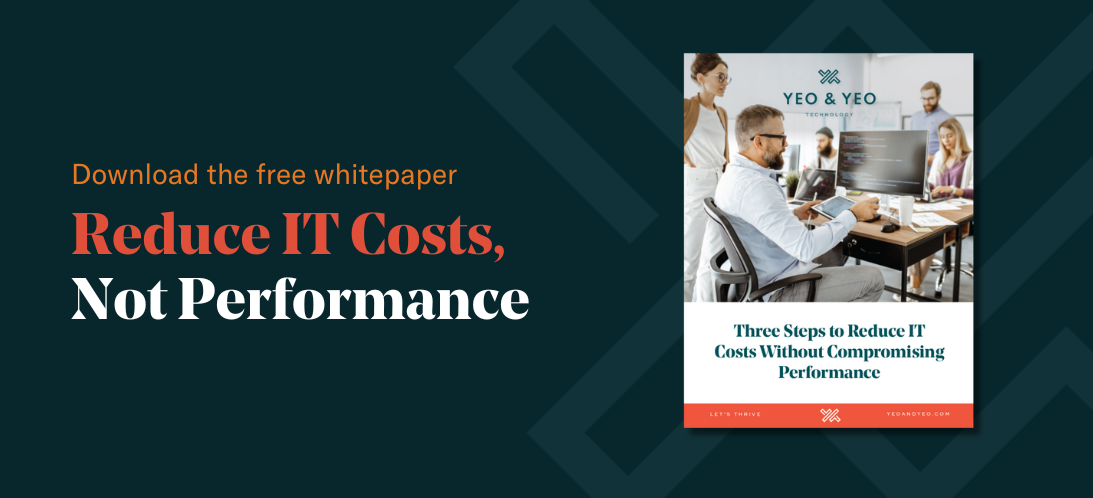
9 Ways to Build an IT Budget That Maximizes Value and Minimizes Waste
Most businesses today are constantly under pressure to upgrade their information technology (IT). Whether it’s new software, a better way to use the cloud, or a means to strengthen cybersecurity, there’s always something to spend more money on.
If your company is feeling the strain of rising costs due to ESTA, minimum wage increases, and other external factors, your IT budget may be tighter than ever. The good news is that you and your leadership team can take proactive steps to reduce IT expenses while maintaining efficiency and security.
1. Align IT Needs with Business Goals
Before diving into the numbers, aligning your IT budget with the company’s overall business strategy is crucial. Technology should support business growth, improve operational efficiency, and help solve pain points. Identify your organization’s key priorities and objectives for the upcoming year. For example, are you looking to improve cybersecurity, upgrade legacy systems, or invest in cloud services to support remote work? Once you understand your business goals, it becomes easier to allocate resources efficiently.
2. Assess Current IT Infrastructure
A thorough assessment of your existing IT infrastructure is critical to avoid wasting money on unnecessary upgrades or services. Identify which technologies still provide value and which may be underperforming or redundant. For instance, consider:
- Can systems be consolidated or replaced with more cost-effective solutions?
- Are all devices and software licenses being used, or could unused subscriptions be eliminated?
- Is your hardware near the end of its useful life, or can it continue to be effective with some minor improvements?
Understanding what you already have allows you to avoid purchasing what you don’t need.
3. Prioritize Investment Based on Impact
Once you have a clear picture of your existing systems, you can prioritize IT investments based on their impact on your business goals. At this stage, making difficult decisions is necessary. While every department may have technology requests, not all of them will have the same level of impact on your business’s success.
For example, cybersecurity may take precedence over new software tools, given the increasing threats to digital security. Similarly, investing in cloud infrastructure for remote work may become a top priority if your organization embraces hybrid work models. By ranking initiatives based on importance, you ensure your budget goes towards the highest-impact projects.
4. Consider the Total Cost of Ownership
When budgeting for new technology, it’s important to consider not just the upfront cost but the total cost of ownership (TCO). TCO includes ongoing expenses such as maintenance, upgrades, training, and support. While an initial purchase may seem like a good deal, hidden costs could quickly add up and lead to waste.
5. Forecast Future Growth
It’s essential to build a budget that addresses current needs and anticipates future growth. Technology investments should be scalable to accommodate expansion without requiring a complete overhaul. A well-constructed IT budget should consider potential increases in employee headcount, data storage requirements, or the need for new software as the business grows.
6. Build in Contingency for Unexpected Costs
Despite careful planning, unexpected expenses can always arise — whether it’s a system failure, a security breach, or an urgent need to upgrade software. That’s why it’s wise to set aside a portion of your IT budget as a contingency fund.
A good rule of thumb is to allocate around 10-15% of your overall IT budget for unforeseen expenses. This allocation can help you avoid financial strain when surprises happen, ensuring your business can continue operating without disruption.
7. Invest in Employee Training and Support
Investing in your team is key to building a sustainable IT budget. Even the best systems can underperform without proper training, leading to wasted resources — factor in employee training costs to ensure they understand how to use new technologies effectively.
8. Track and Monitor IT Expenses
Once your IT budget is in place, it’s essential to track and monitor expenses regularly. With cloud-based tools and budget management software, you can easily keep tabs on where your money is going and spot areas where you might be overspending.
Regular monitoring allows you to adjust course if necessary, ensuring you’re continually optimizing your IT expenditures. Quarterly or monthly reviews can help catch budgetary issues early, providing the opportunity to pivot before problems become costly.
9. Optimize Vendor Relationships
Vendor management plays a crucial role in ensuring you get the best value for your IT spending. When negotiating with vendors, don’t just focus on price — look for opportunities to reduce costs through bundled services, long-term contracts, or multi-year agreements.
Additionally, be sure to review vendor performance periodically. Are they meeting expectations? Are there better options available in the marketplace? Staying proactive about vendor relationships ensures that you’re receiving the best value for your money and that your contracts are aligned with your changing needs.
Reduce IT Costs Without Compromising Performance
Building an IT budget that maximizes value and minimizes waste requires a careful balance of strategic planning, ongoing assessment, and adaptability.
Ready to dive deeper into how you can optimize your IT budget? Download our whitepaper for insights on reducing IT costs without compromising performance. Get your copy today.